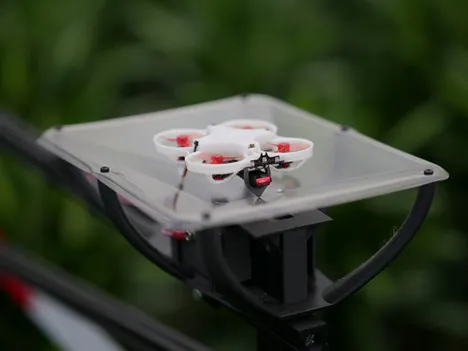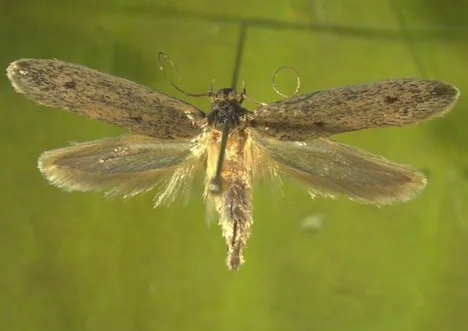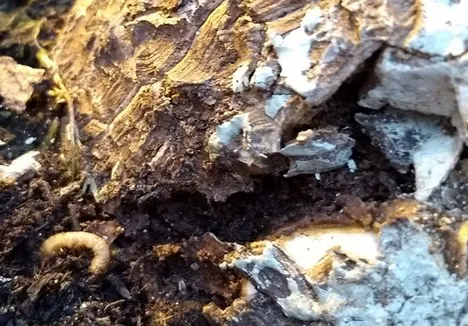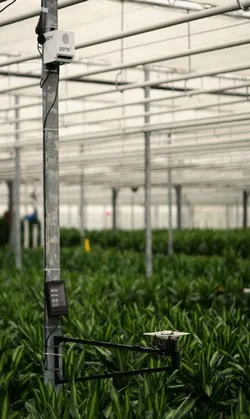PATS has successfully demonstrated the eradication of the Banana moth at a number of Dutch greenhouses in recent weeks. The Banana moth, also known as the Opogona moth, is a pest insect in tropical foliage plant cultivation. Control of the pest is very difficult with available resources, but with the PATS-X drones, a sustainable and effective solution is quickly approaching.

The Banana moth (O. sacchari) is a well-known problem in the cultivation of tropical foliage plants. The larvae drill into the stem, hollowing it out and causing the plant to die off. The insect is native to the humid (sub)tropical regions of Africa and first emerged as a pest in banana cultivation on the Canary Islands. After its introduction in Central America, the insect made its way into greenhouses by trade with Europe, Japan, China, and the United States. In the Netherlands, the insect had the status of quarantine organism until 2019. Today, the pest falls under the RNQP (regulated non-quarantine pest) classification. This means that the pest has established itself here but may not spread further within or outside the EU.
The hidden lifestyle of the larvae makes the pest difficult to spot but even more difficult to control. This means that the use of plant protection products always has limited effects. There is an increasing focus on signaling and hygiene, especially the physical removal of infected plants. Despite these measures, eradicating the pest is virtually impossible, requiring sustainable alternatives to stop its spread and reproduction.

In recent months, PATS has started the rollout of multiple PATS-X systems at a number of companies in crops like tomato, gerbera, and, consequently, green plants. Several species of harmful moths are found in these environments, such as the Tomato looper (C. chalcites), the Duponchelia fovealis, but also the Banana moth.
Initial results of controlling this pest insect with the PATS-X drones are promising. The system is capable of killing off multiple flying adults each night. PATS' goal is to terminate the adults early on and stop the life cycle - and thereby, the multiplication and spread of harmful offspring. This prevents the escalation of the infestation at a later stage.

The goal is to use technology to keep these and similar pests manageable, making integrated cultivation increasingly possible. This allows growers to reduce the use of plant protection products, automate labor-intensive processes of scouting and control, and prevent economic damage.

Spectacular footage of the drones hunting the moths can be found on PATS Drones' YouTube channel. The videos show how the system detects moths during the night and sends a drone towards them, after which the insect in pursuit is eliminated by the impact of the drone's propellers. The drone then lands back on the charging platform so that it is immediately ready for the next mission.
Curious about the possibilities for your cultivation? Or would you like to see e a demo of the drones in action? PATS will be present at the HortiContact trade in Gorinchem (NL) show from February 14th until February 16th, 2023, at booth D114.
For more information: Bram Tijmons, CEO and Founder
Bram Tijmons, CEO and Founder
PATS Indoor Drone Solutions
Tel.: +31 (0)6 330 876 50
info@pats-drones.com
pats-drones.com
